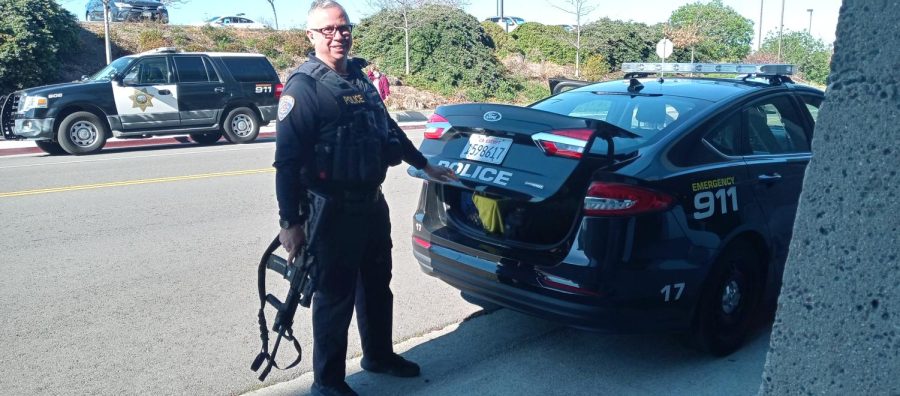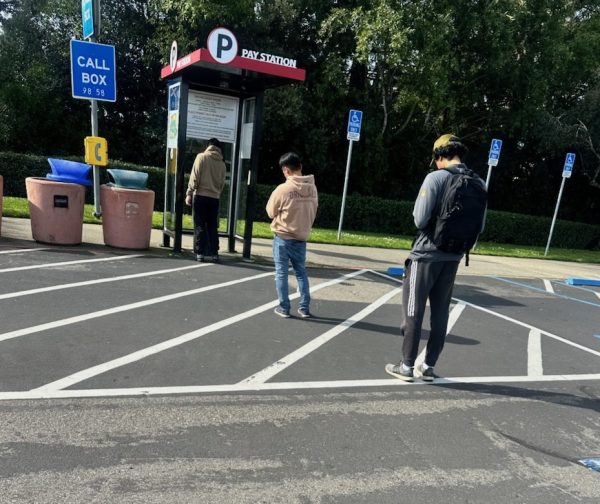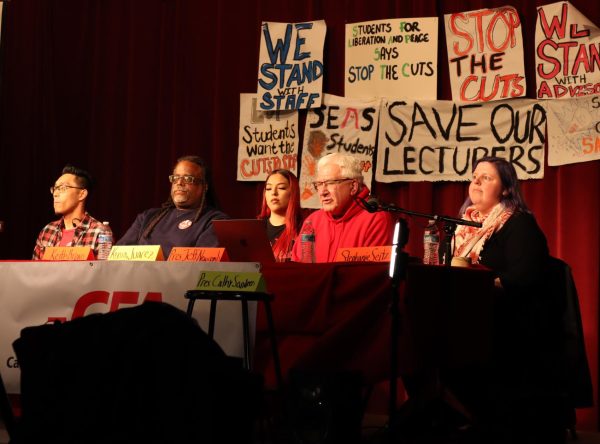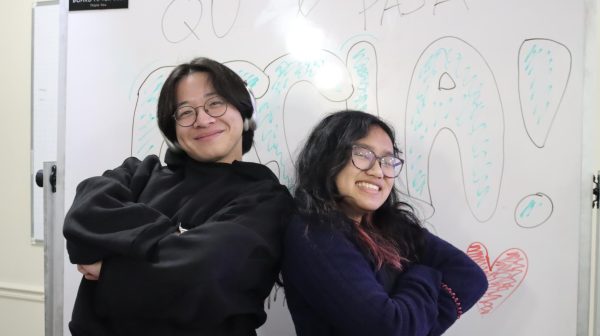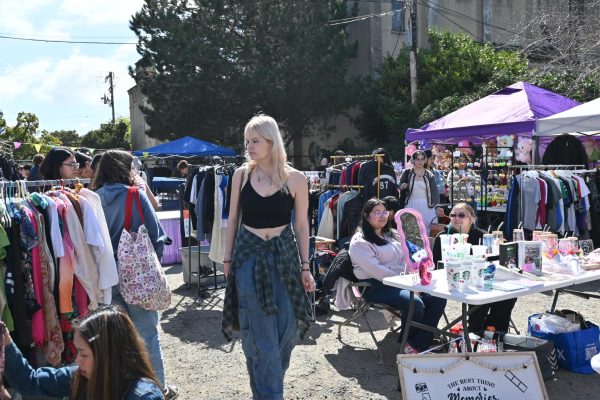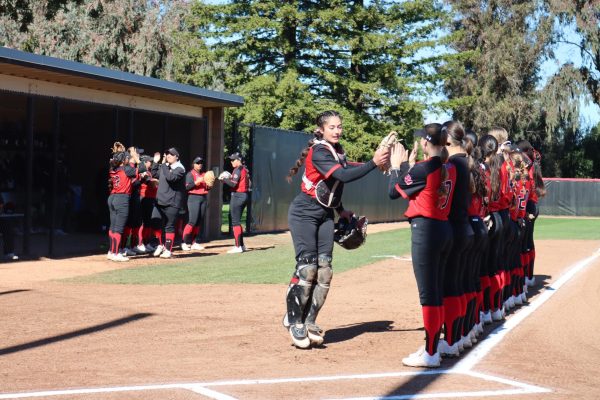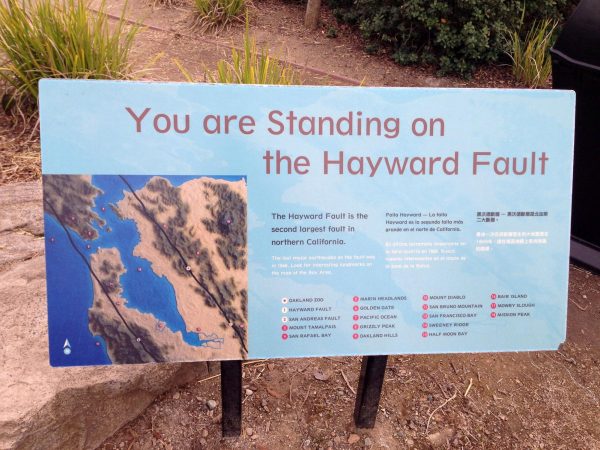University Police Spotted With Semi-Automatic Weapons on CSUEB’s Hayward Campus
Chalkboard sergeants and civic sentinels: Should students be concerned?
Hayward, CALIF —Photos obtained by The Pioneer Online showed a California State University, East Bay University Police Department police officer garnering a semi-automatic weapon over their shoulder on multiple occasions.
Amidst the local and national outcries clamoring for change following the 2020 George Floyd protests, mentions of police reform at academic institutions are often or rather scant —perhaps erroneously so.
According to the Bureau of Justice Statistics’ 2015 Campus Law Enforcement Special Report, 92% of all public 4-year campuses with an enrollment of 2,500 or more students employed sworn officers —94% of whom are permitted to wield a sidearm.
Currently, UPD is in possession of four rifles in their inventory. Police Chief Mark Flores stated that a single rifle accompanies an officer during patrol at any given time. Typically, one officer maintains patrol.
Lieutenant Omar Miakhail assured that UPD officers are disciplined in gun safety, citing that prospective police recruits undergo a rigorous hiring process, are subject to field training, and are financed for six months of police academy. Seasoned officers and lateral hires are required to maintain certification.
Sexual battery, burglary, motor vehicle theft, and stalking incidents accounted for most of the criminal activity on campus between 2018 and 2020, according to CSUEB’s 2021 Annual Security Report.
The prevailing nature of crime as an act of opportunity warrants skepticism as to whether lethal force should be deployed, and whether some functions of the police should be assumed by mental health services and sexual harassment prevention procedures.
When prompted for comment in regards to the picture of a UPD wielding a semi-automatic weapon, Miakhail replied, “Better to be prepared,” citing the possibility of an active shooter threat.
“Our officers are trained to use weapons as a last resort in dealing with a dangerous situation,” reiterated Miakhail, recounting last month’s incident, wherein officers were able to de-escalate and apprehend a person brandishing an axe on campus without resorting to the use of lethal force.
Under current department protocol, patrol officers are to keep handguns in a holster and a rifle in the patrol car while on duty for purposes of urgent response to dire circumstances.
Disarming the police may pose a greater risk to the student body than the proliferation and ubiquity of firearms among campus police.
When a City College of San Francisco student pulled out a gun in the library, placing students, visitors, and library faculty in grave danger, City College Police were quickly dispatched. Due to the no-gun policy on campus, college police were restricted to mere deterrents against a lethal weapon and were forced to contact SFPD for additional support.
Following such harm reduction and security-eminent mode of thinking, a readily available arsenal of military-grade weaponry serves as a swift and striking application of law enforcement, capable of minimizing or neutralizing threats in the event of a person’s life in jeopardy.
In preserving the delicate balance of trust and security, however, the use of firearms introduces an element of suspicion into the equation. The crisis of trust is most acute among minority groups, who have been historical victims of institutional prejudices. Policing has expanded beyond mere musings of safety protocols, as the discussion adopted a markedly sociological aspect along ethnic, socioeconomic, and racial fault lines.
Following the public outrage over the untimely death of George Floyd, 48% of African-Americans expressed cynicism over equal treatment of white and Black communities by the police, while 42% of white Americans affirmed confidence, according to a PBS poll.
“The optics of [police officers with rifles] is very concerning,” admitted Dr. Cory Lepage, assistant professor of Criminal Justice at CSUEB, speculating that the distrust of police will enable “a push towards community-oriented policing.”
Guns may provide a quick fix to solving malfeasance, though they rarely address the societal ails that enable crime, such as mental health issues.
Lepage explained that the faith of the community in their guardians is foundational for police legitimacy, inviting the UPD to inquire as to “what are the community needs?” To Lepage, expanded student outreach and continued efforts into hiring diverse staff are key.
“We are isolated from the rest of the city, and our unique geography provides us with more opportunities to become closer,” suggested Lepage.
Certainly, UPD is aware of the crucial role they occupy on college campuses and is working to adjust accordingly. Within the past 18 months, UPD has created a dedicated Community Engagement Committee, and has required all officers to attend crisis intervention, mental health, and threat-assessment de-escalation training workshops; hosted in conjunction with the Student Health and Counseling Center.
“We want to be visible and available, and make sure that students have as many resources allotted to them as possible,” said Miakhail, claiming that UPD is focused on “changing the paradigm” through individual approaches to building trust, such as regular interactions with community members and educating the students on personal safety tactics.
Miakhail outlined that the primary challenge of proper student outreach is the fluidity and the impermanence of the student population, since many students remain on-campus for a fixed term of several years, leaving indefinitely after graduation.
Worthy of accolades is UPD’s progress toward hiring a diverse staff. CalMatters’s “UC, Cal State police much less diverse than the students they serve” article reveals CSUEB’s UPD department composition to be occupied by twenty-five percent African-American, thirty percent Latino, and thirteen percent White officers, mirroring East Bay’s demographics.
Fostering an inclusive police force displays that the police are attentive to the community, thereby easing police-civilian tensions among minority groups and improving the quality of policing, a Princeton study suggests. Not to be regarded as a silver bullet, diversity in policing is but one crucial step towards a more holistic union between the community and their civic sentinels.
The triumph of community policing hinges on mutual assurance, currently undermined by motions towards militarization of campus police. While the possession of rifles isn’t an issue The mere possession of firearms communicates a distinct message of distrust and serves as an exhibition of authority through fear, whether the projection is visible, deliberate or neither. The ramifications of an armed police force at an academic institution should not be exaggerated, nor omitted.


